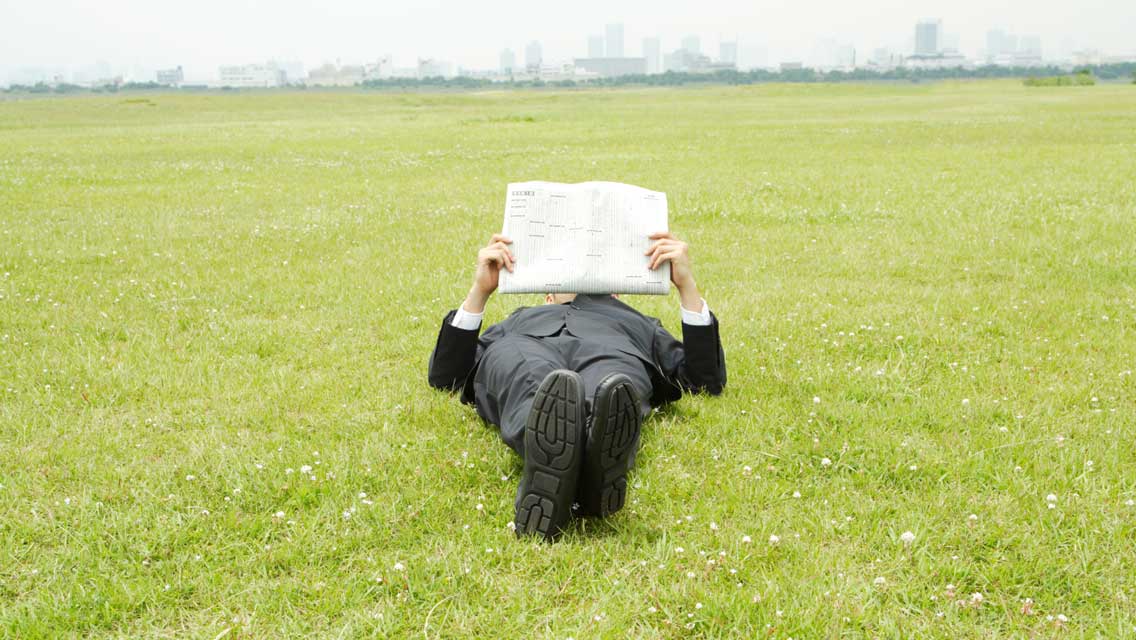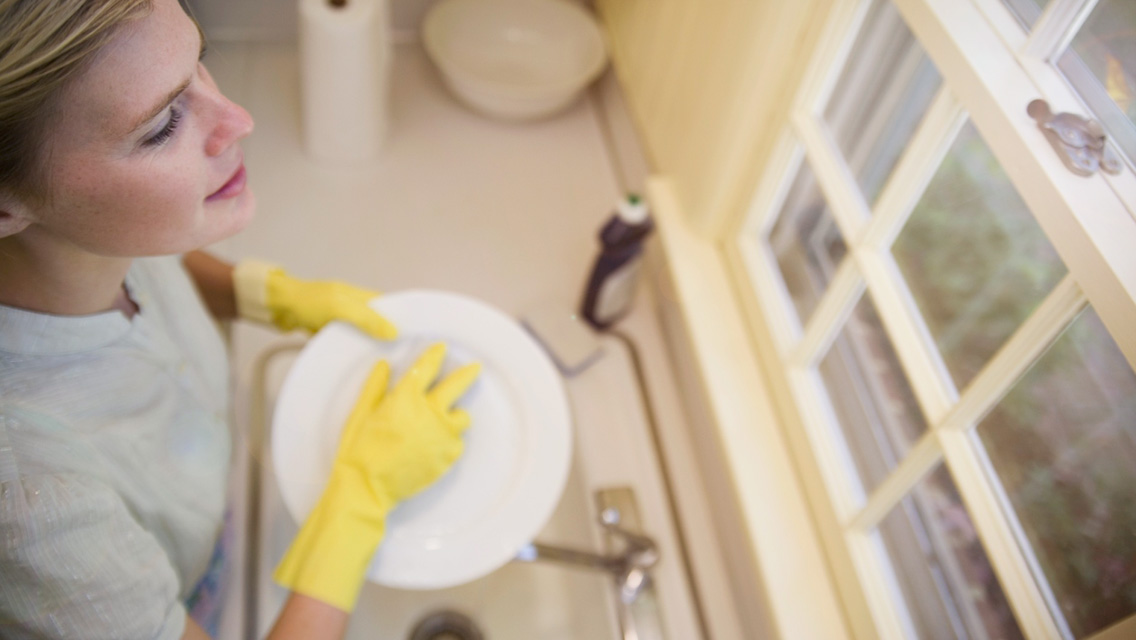While composing a song, Charla McCutcheon sometimes loses track of time.
“I’ll start playing music at 7 or 8 at night, and the next thing I know, it’s 4 a.m.,” says the New York City–based musician.
She also loses a sense of her physical self. “I’m so into the music that I forget I’m even present; it just feels like I’m part of the creation.” Sometimes she’ll even be surprised when she hears the songs, as if someone else wrote them.
Most of us experience this feeling at some point — losing track of time and space while involved in an activity we love. Athletes often describe this state as “being in the zone.” Psychologists sometimes refer to it as “flow.” That term, coined in the mid-1970s by the Hungarian social psychologist Mihaly Csikszentmihalyi, PhD, is gaining new relevance today as we struggle to focus amid a media landscape filled with near-constant distractions.
Musicians, artists, and athletes cultivate flow states deliberately, whether they’re aware of the concept or not. But the experience is not reserved for creative types: You can get into flow while cleaning your garage, weeding your garden, or cooking a meal. It’s less about the activity than the relationship between the doer and the thing being done. If an activity requires some skill, and you love it and are good at it, you can easily lose yourself in it. (Try these tips for finding a new skill or past time to immerse yourself in.)
The connection between flow states and happiness has been well documented, most notably in Csikszentmihalyi’s seminal 1990 book, Flow: The Psychology of Optimal Experience. But what’s just coming to light is the link between flow and our overall health and well-being — which can suffer without it.
This fact is more pertinent today than ever. Deep attention is under siege. With social media NS games on our phones — not to mention plain old web browsing, emailing, and texting — we’ve never been so inundated with distractions. Staying focused on one task can feel nearly impossible as our phones light up with incoming texts or notifications that a photo on Instagram has garnered another like. (There are habits we can cultivate to strengthen our focus. Learn more at “How to Reclaim Your Attention Span.”)
Our efforts to multitask our way through all this are not only doomed to fail, they’re also a threat to our health. “Multitasking creates a dopamine-addiction feedback loop, effectively rewarding the brain for losing focus and for constantly searching for external stimulation,” notes neuroscientist Daniel J. Levitin, PhD, author of The Organized Mind: Thinking Straight in the Age of Information Overload.
The best antidote to constant distraction is to create the time and space necessary to becoming fully immersed in a task — to get into flow — and to continually challenge ourselves so we satisfy the brain’s desire for novelty.
Writing in the Guardian, Levitin explains why the brain is so vulnerable to distraction: “The prefrontal cortex has a novelty bias, meaning that its attention can be easily hijacked by something new — the proverbial shiny objects we use to entice infants, puppies, and kittens.”
We can, in other words, become biologically addicted to checking our phones. The irony here, Levitin adds, is that “the very brain region we need to rely on for staying on task is easily distracted.”
The best antidote to constant distraction is to create the time and space necessary to becoming fully immersed in a task — to get into flow — and to continually challenge ourselves so we satisfy the brain’s desire for novelty. First, though, we need to learn how to create the right conditions, which involves putting away digital distractions, and understand why it’s worth the effort.
Your Body on Flow
Persistent distraction is hard on the body. The dopamine-addiction loop floods our systems with cortisol and adrenaline, two stress-related hormones that can wreak havoc when they run high for extended periods of time.
“When we’re stressed out or frustrated, we go into fight-or-flight mode,” explains Elizabeth Frates, MD, an assistant professor of physical medicine and rehabilitation at Harvard who specializes in lifestyle medicine. “There’s no actual lion in front of us, but it feels like there is one. Our sympathetic nervous system is activated, increasing our respiratory rate, increasing our heart rate, and shunting blood from our digestive system to our muscles so we are not able to digest our food properly. Instead, we are ready to ‘fight or flee’ using our muscles.”
Prolonged periods of stress can suppress the immune system, so we’re more likely to catch colds and take longer to recover from them. It can also lead to insomnia, which has been linked to a host of health issues.
When we’re in a flow state, the parasympathetic nervous system is activated, releasing a cascade of calming hormones associated with the rest-and-digest response.
Flow, by contrast, triggers the opposite of the fight-or-flight response, Frates says. When we’re in a flow state, the parasympathetic nervous system is activated, releasing a cascade of calming hormones associated with the rest-and-digest response. Breathing becomes more relaxed, muscles loosen, and heart rate slows. The specific biochemistry associated with flow will vary depending on the activity (writing a poem versus going out for a run, for example), but the overall benefits to health and well-being are the same.
Addiction specialist Judson Brewer, MD, PhD, a neuroscientist and associate professor of medicine at the University of Massachusetts Medical School, studies the brain activity of subjects who are in flow. Using MRI scans, Brewer and his colleagues have observed how the brain reacts during a stressful state (for example, while craving something), as well as when the subject was deeply focused on a task.
They found the posterior cingulate cortex area of the brain (a key node in the default-mode network, responsible for automatic behaviors) was active when craving, and calm while the subject was concentrating.
This observation allows researchers to bridge the gap between subjective experiences and measurable brain activity, Brewer says. It makes clear that concentration calms the brain.
Flow is “critical for the survival of our species,” he continues, because we need deep concentration to evolve or create new and necessary skills.
Still, he notes an important paradox: “If you try to get into flow, you’re going to end up moving in the opposite direction. It’s like that line in The Empire Strikes Back when Yoda says, ‘Do or do not — there is no try,’ because when there’s no trying there’s just doing.”
The Distracted Brain
Nonetheless, there are occasions when we are more likely to find our flow. Csikszentmihalyi suggests starting with a task challenging enough to keep you engaged but not so hard that it leaves you frustrated. We find flow wherever we’re able to lose ourselves in deep concentration, whether that’s in a lab analyzing tissues or on the mat in yoga class.
This type of focus, explains Brewer, is the opposite of losing track of time while you wander from post to post on Facebook. “One is zoning in,” he says, “and one is zoning out.”
Zoning out can lead to misery. Brewer cites a Harvard University study in which researchers contacted participants throughout the day to see if they were paying attention: Were they present and focused on a task, their surroundings, or the person with them, or were they ruminating distractedly about the past or the future? Researchers also asked how happy the subjects felt. The findings were disheartening.
“Forty-seven percent of the time, people were lost in mind wandering. Past, future, but not here,” Brewer notes. Subjects in this state also reported that they were decidedly less happy.
So when it comes to addictive distractions like Facebook, Twitter, Tik Tok, and Instagram, things get sticky. “These technologies provide an intermittent reinforcement process that hijacks our reward brain pathways — the same neural pathways that get activated when we use drugs,” says Brewer. “We get so caught up in them that we’re not consciously aware of what we’re doing.”
Before long, we become addicted to the short-term pleasures of distractions that make us measurably less happy overall.
Social media makes the need for flow even more imperative, Brewer argues. Cultivating concentration isn’t merely a safeguard against the harmful effects of distraction; it actually offers mental benefits on its own.
Flow states, for example, can protect our brains as we age. A study published in the Journal of Neuropsychiatry and Clinical Neurosciences examined the effects of cognitive training, including knitting, quilting, reading, and playing games, in subjects aged 70 to 89. Researchers found that those activities — unlike traveling or socializing — were associated with sustained cognitive acuity.
Flow and Emotional Health
The main reason flow feels so good, according to researchers, is because our thoughts, intentions, and actions are working in harmony. We’re not in conflict with ourselves.
“Flow helps to integrate the self because in that state of deep concentration, consciousness is unusually well ordered,” writes Csikszentmihalyi in Flow. “Thoughts, intentions, feelings, and all the senses are focused on the same goal. . . . And when the flow episode is over, one feels more ‘together’ than before, not only internally but also with respect to other people and to the world in general.”
McCutcheon says she felt that sense of togetherness while practicing with her band. She’d arrive at rehearsal with just the slightest idea for a song, she says, “and we would transform it together. It felt like we were of one universal mind.”
“I recognized this alternative state, without knowing the name for it, when I was very young,” says Austin, Texas–based visual artist Holly Sabiston, who began drawing at age 6. She says this concentration helped her thrive in her otherwise chaotic childhood home. “It feels open and unhindered. No constraints,” she says.
The sense of purpose and satisfaction we get from accomplishing a task — especially a challenging one — also contributes to the positive effects of the flow state.
These days, Sabiston finds herself in flow while painting — and during kettlebell workouts. “In the beginning, you have to concentrate really hard. You focus on improving, you count, and you breathe and do as many repetitions in 10 minutes as you can,” she explains.
“There’s something about having a purpose — and having a structure within that purpose — that’s immensely satisfying.”
Finding Your Flow
We are all capable of getting into flow, says Christine Carter, PhD, a senior fellow at the Greater Good Science Center at the University of California, Berkeley and author of The Sweet Spot: How to Find Your Groove at Home and Work. She defines it as the “overlay between where we have our greatest strength and greatest ease.”
While flow may seem to be the provenance of artists, musicians, and athletes, Carter believes that these groups simply experience it more often because the “conditions are already there” in what they do.
You may already know where you feel a sense of competence and peace — playing basketball or doing math equations or arranging a bouquet of flowers. If you don’t, and you want to spend more time in a flow state, start with activities that interest you. If you love to cook but always make the same meals, add a new challenge, like bread baking. If you find your bliss in Zumba class, but you already know all the moves, try another style of dance.
Flow exists on a spectrum of attention, with obsessive addiction at one end and getting completely out of your own way at the other.
Pay attention to your body’s cues. It’s another way to identify activities that put you in flow — and to know when you’re in it. Flow exists on a spectrum of attention, with obsessive addiction at one end and getting completely out of your own way at the other, Brewer explains. At the stressful end, your body feels contracted — shoulders hunched, chest tight. When you’re in complete flow, your body feels expansive and calm, with a focused mind and open heart.
When you find yourself feeling that expanded open quality, what are you doing? Conversely, when you feel contracted, what are you doing? To build more space for flow in your life, start by doing more of what makes you feel open and expanded and less of what makes you feel contracted and tense.
Turning Flow Into a Habit
Once you’ve identified an activity that puts you into flow, you can make it a regular part of your routine. Carter suggests beginning with brief increments.
“Start with 20 minutes,” she says. “Maybe you won’t get much done then, but you’re practicing — you’re doing drills, essentially — and you’re building a practice.” She says the optimal amount of time to be in flow is 90 minutes, so build toward that.
There are ways to train your body to drop into flow quickly, Carter says. “If you do the activity at the same time each day, that can be a cue to your brain.” Maybe you go for a run or sit down to write at your laptop at 7 a.m. every morning.
Having a preflow routine is another cue. Carter says she cleans off her desk as she boils water for tea. Then she turns on her computer, goes to the bathroom, and fetches her tea.
“It’s a list of things that signals to my brain, OK, it’s time. Doing them in the same order each time is also very helpful. That way, one trigger cues another.”
And turn off all your devices so you won’t be interrupted by flashing messages and noisy dings.
After a while, many people who have a flow habit start to recognize emotional shifts cuing them to attend to their project or interest. McCutcheon can feel when she has a streak of creative focus coming on. “It often starts with me getting antsy — whatever I’m doing, I want to be home making music. Whatever else I should be doing, I can’t wait to get home and make music.”
Sabiston experiences a similar emotional crescendo before she begins a major painting. “I didn’t recognize this until further into my career, but I almost always spend a day crying before I begin work on a big project. Now I give myself permission to have a cry fest. That’s how I get into the zone.”
Defending Your Flow
For many of us, the work involved in our chosen careers puts us into flow. A study Csikszentmihalyi led at the University of Chicago found that flow states occurred three times more often when the participants were at work than during their free time. So if you tend to find your flow while journaling or jogging or hunting for wild mushrooms, you may need to defend that blissful space.
Carter recommends building a “fortress against interruption” when trying to set the right conditions for flow: Silence your phone (even better, turn it off and move it out of sight) and put on comfortable clothes. “If you can’t concentrate,” she says, “you can’t be in your sweet spot. Period.”
The same technique can be applied to friends and family who may try to interrupt you while you’re in flow. They may not understand how important this activity is to you, even if you explain. That’s OK. Listen to your feelings and be clear about your need for time. And don’t be surprised if they notice your calm concentration and suddenly start to find more time for their own flow activities. Healthy habits are contagious, too.




This Post Has One Comment
I feel so relieved that others have a drop before creativity. It’s as if the need to uplift is at the subconscious level. Setting the stage for routine activity is the key to organizing your energy in a positive way. Thanks for the confirmation.